With the release of the Mac mini M4 Pro, Apple has reshaped expectations for what a compact desktop machine can deliver—not just in terms of power but also its physical presence. Whether you’re someone with limited workspace or simply drawn to a minimalist aesthetic, this machine has been crafted with your needs in mind.
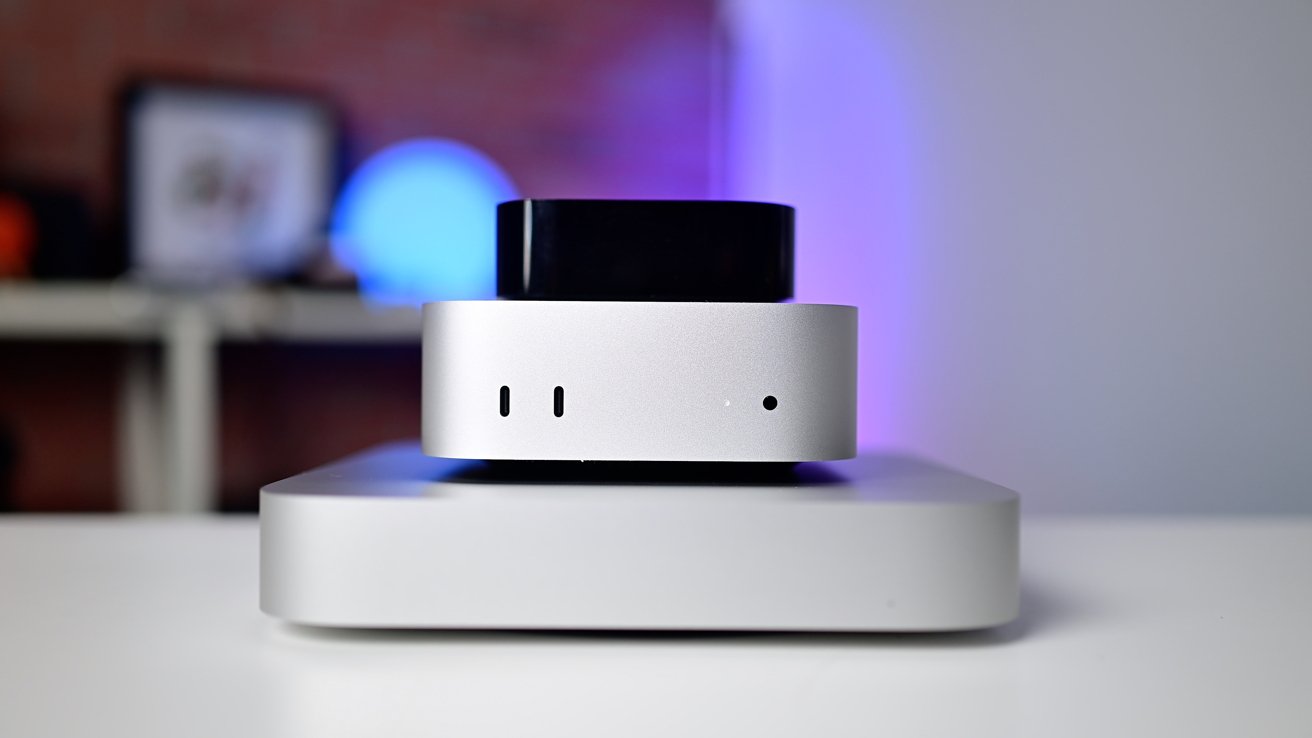
Apple TV [top], new Mac mini [middle], old Mac mini [bottom]
The refreshed Mac mini design isn’t just smaller; it’s significantly more compact. Shrinking the traditional 7.75-inch rounded-square design into a neat 5-inch footprint, it’s an office-friendly powerhouse ready to slip seamlessly into tight setups. The slightly increased height—rising from 1.41 inches to 2 inches—might initially seem counter-intuitive, but it gives the machine a sturdier, more ‘compact powerhouse’ vibe. Coupled with its modern rounded edges and sleek aluminum chassis, the M4 Pro model feels every bit as premium and forward-thinking as Apple intends.
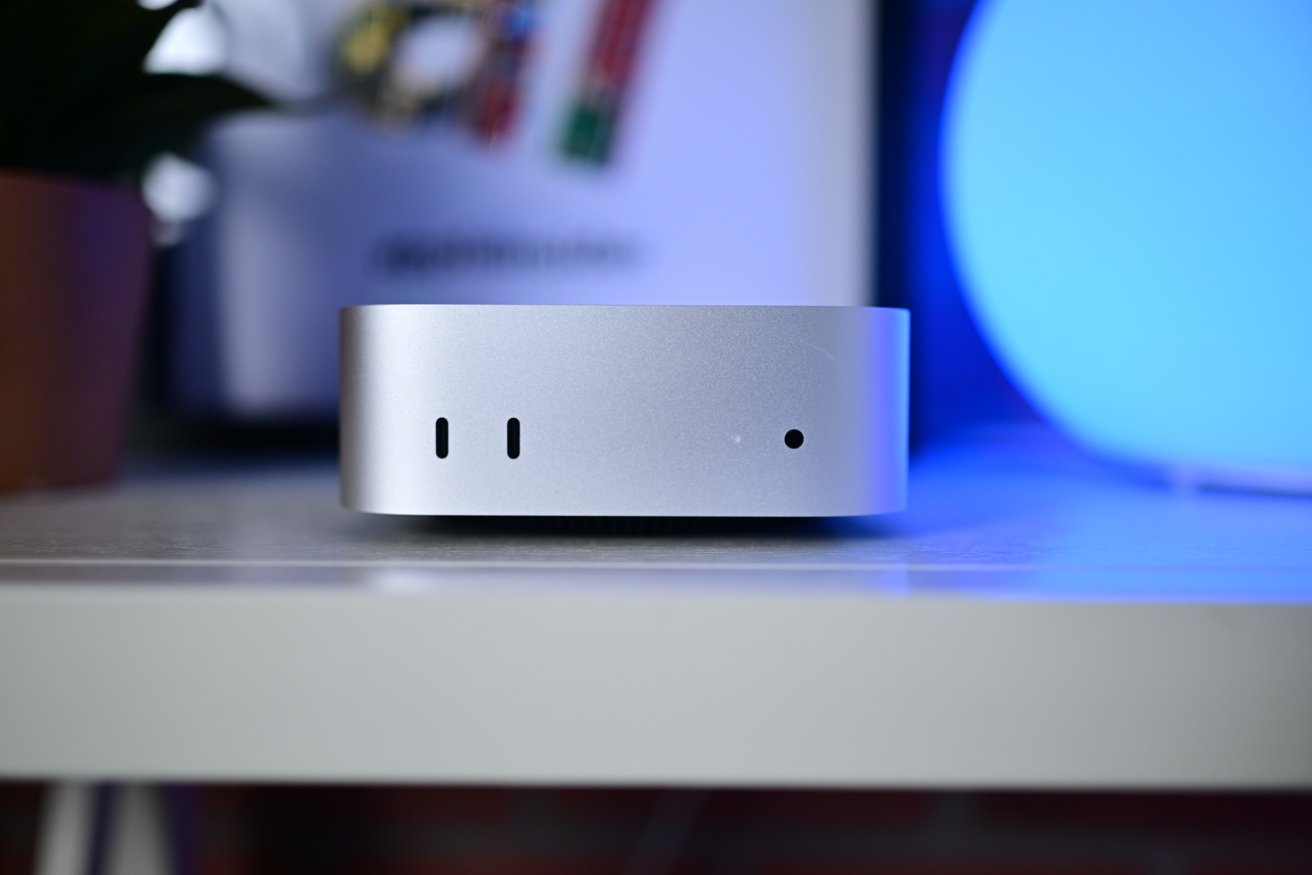
The front ports of the new Mac mini
One of the most notable design tweaks is the adjustment to port placement. Unlike its predecessors, Apple has relocated two USB-C connections and the headphone jack to the front. This is a major shift from past Mac minis, which sported an all-port-at-the-back design language. Understandably, this might feel jarring for long-time fans of the more seamless, clutter-free aesthetic. But think about how much easier it’s going to be to plug in a pair of headphones for late-night editing or quickly connect an external drive on the fly. Apple seems to have taken into account not just how the device looks, but how it’s actually *used*—a refreshing realization.
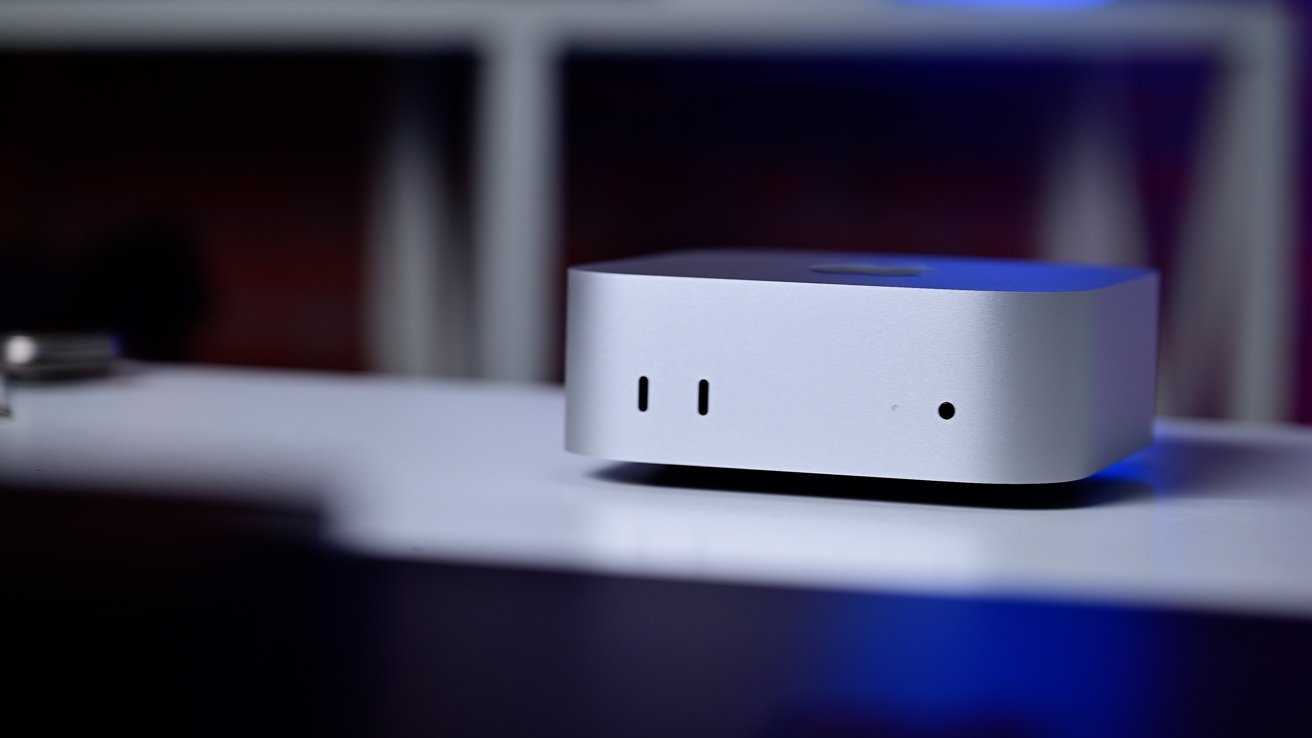
The M4 Pro Mac mini’s front ports are sparse but reachable.
While these front-facing ports undoubtedly add to practicality, they also hint at another change driven by necessity—the smaller chassis size means Apple was limited in the amount of space available on the back. This compromise may disappoint purists, but it’s far from a dealbreaker for most users, especially those valuing accessibility in their day-to-day workflow.
Another big adjustment is the location of the power button. For this model, it’s tucked underneath the device. Now, let’s be honest—this might feel inconvenient at first. Many of us are used to being able to casually tap the physical button to turn our machines on or off, and lifting up the device may sound like a hassle. But here’s the silver lining: how often do you even touch the power button these days? With sleep modes and automated startup options, this will likely rarely interrupt your routine.
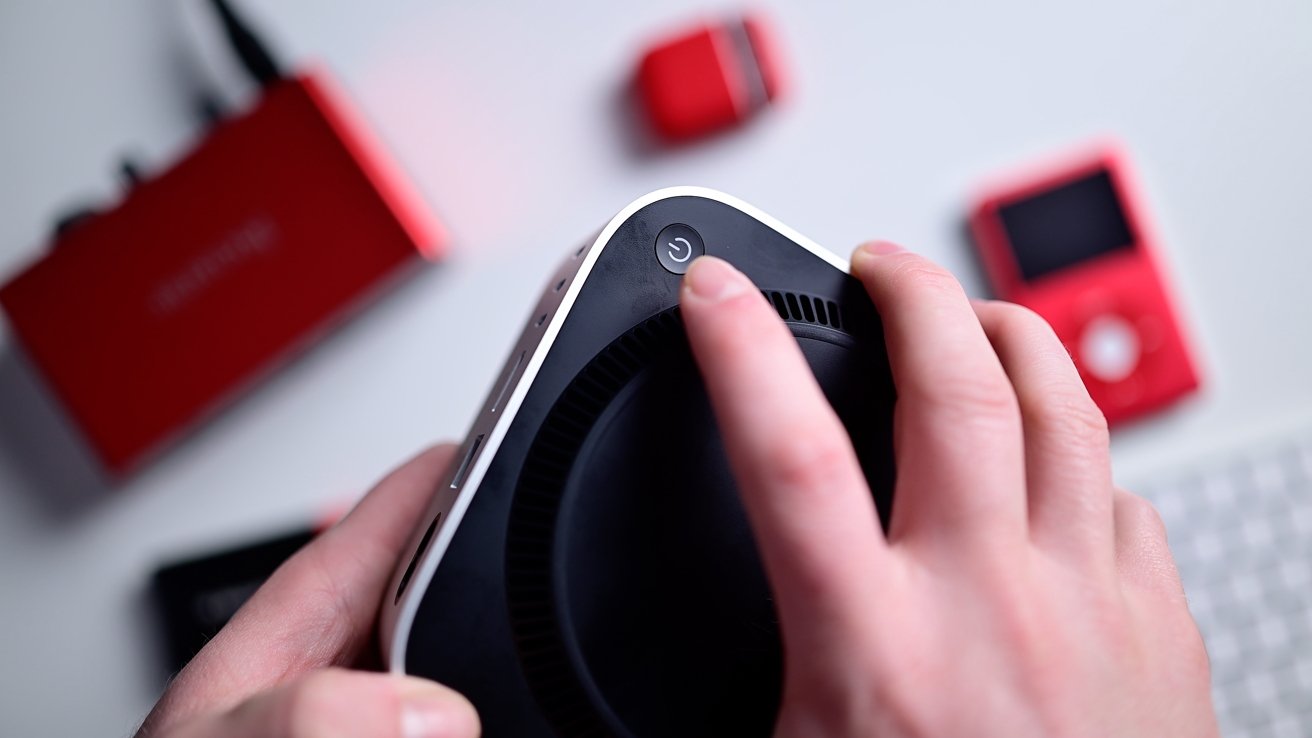
The M4 Pro Mac mini’s power button is now underneath a corner
The updated proportions and rethought design features position the M4 Pro Mac mini as a bold step forward. It’s not just a matter of making something smaller—this redesign truly feels purposeful. Balancing form and function, Apple delivers a machine optimized for professionals and creatives, while honoring the Mac mini’s legacy as a compact, unassuming companion on any desk.
When it comes to raw performance, the Mac mini M4 Pro punches well above its weight class, delivering results that are downright impressive for a device of its size—and price point. Apple’s M4 Pro chip is a two-generation leap from the M2 Pro, and the difference in day-to-day performance is nothing short of transformational. Whether you’re an avid video editor, a 3D artist, or a developer juggling multiple virtual machines, this small powerhouse promises to meet your needs with ease.
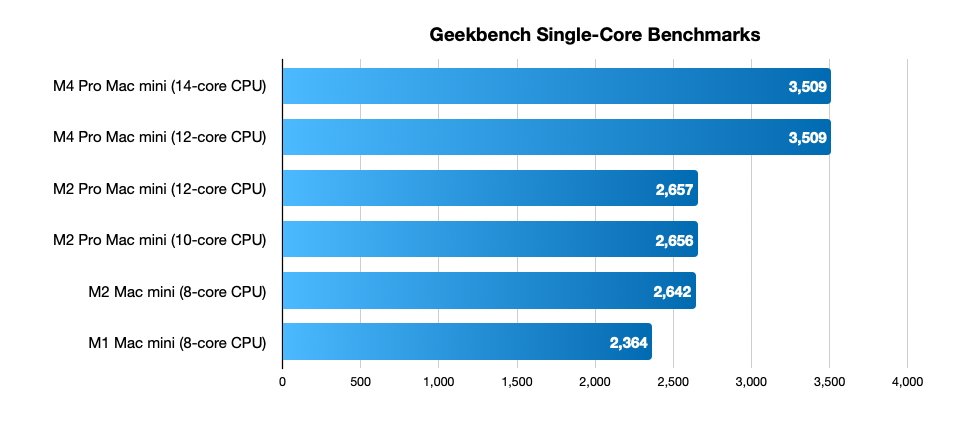
M4 Pro Mac mini leads Geekbench single-core benchmarks
On single-core tasks—think everyday operations like opening applications, web browsing, or light photo editing—the M4 Pro flexes its muscle with an astonishing Geekbench score of 3,509. To put that into perspective, it’s nearly 900 points higher than the M2 Pro Mac mini and even surpasses the M1 Max and M1 Ultra variants of the Mac Studio. It’s the kind of performance that transforms everyday computing, making even mundane tasks feel buttery smooth.
However, where the M4 Pro really shows its value is in multi-core performance. Benchmarked at 20,195 for the 12-core variant and an even more astounding 22,004 for the 14-core top-tier model, it’s proof that Apple has finely tuned this powerhouse for multi-threaded workloads. Video editing in Final Cut Pro? No problem. Running demanding simulations or compiling large codebases? The M4 Pro eats those up for breakfast. It’s a substantial leap not only from previous Mac mini iterations but also from many pricier alternatives.
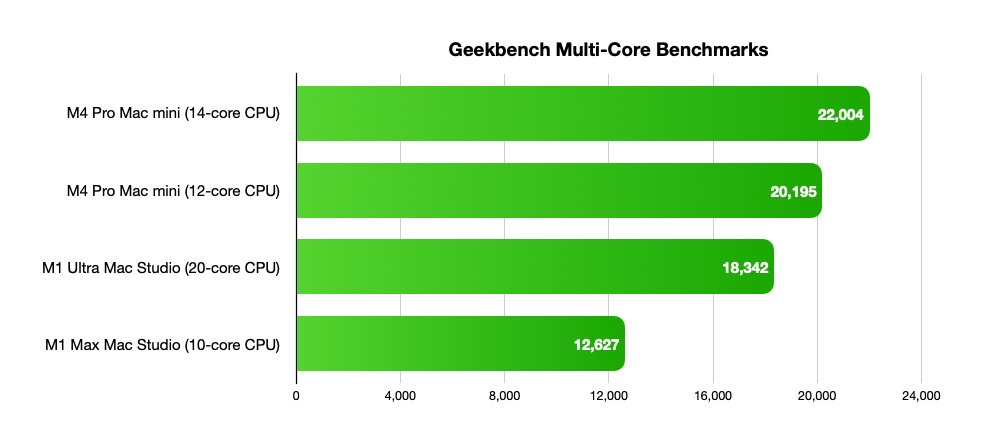
M4 Pro Mac mini vs M1 Ultra Mac Studio: Core performance speaks volumes
If you’re working with graphics-heavy applications, the M4 Pro doesn’t disappoint. Its GPU, available in 16-core or 20-core configurations, delivers substantial improvements. Geekbench Metal scores reveal that while it may not quite reach the raw graphical power of the M1 Ultra in the Mac Studio, it absolutely shatters benchmarks for most workflows that professionals or creatives require. Tasks like 4K or even 8K video rendering, running complex visual effects, or managing multi-display setups are handled with ease. And the fact that it bids farewell to lag during timeline scrubbing or real-time rendering only further seals its status as a production powerhouse.
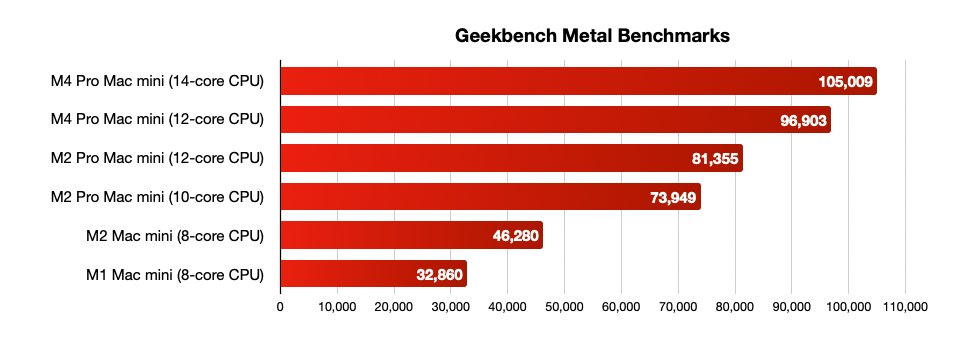
Geekbench Metal benchmarks: The M4 Pro makes a strong statement
Of course, pushing the performance envelope this hard raises concerns about cooling, but the M4 Pro Mac mini is impressively quiet under pressure. Thanks to Apple’s expert thermal management, even during intensive multi-core or GPU-heavy tasks, the device remains whisper-quiet. Users working in noise-sensitive environments or late at night will appreciate this thoughtful design.
Another notable upgrade is in memory and storage speeds. The M4 Pro supports up to 64GB of lightning-fast unified memory, with bandwidth now at an impressive 273GB/s, making operations like transferring massive files, running multiple high-resource apps, or loading huge datasets unbelievably snappy. The SSD is no slouch, either. With read speeds clocking in at 6.3GB/s and write speeds just over 5GB/s, boot times and application launches happen in the blink of an eye. These speeds are a boon for workflows that rely heavily on disk performance, such as working with high-resolution media files or virtual machine environments.
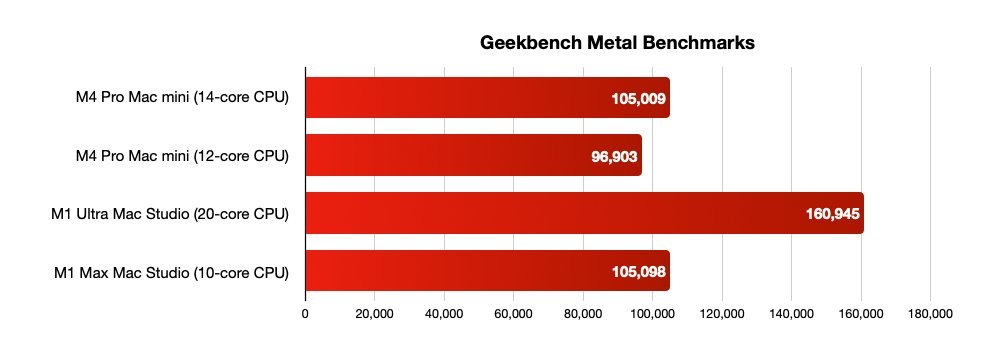
M4 Pro Mac mini vs M1 Ultra Mac Studio: GPU comparisons reveal key trade-offs
Yet, despite the raw power under its hood, the M4 Pro Mac mini remains energy-efficient. Apple’s commitment to blending performance with sustainability is clear here. Even during demanding tasks, the device’s energy consumption stays remarkably low, making it a wallet-friendly and eco-conscious choice over time.
The M4 Pro Mac mini doesn’t just raise the bar for compact desktops—it obliterates it. At its price point, getting this level of performance feels like having a Mac Studio in miniature form. Whether you’re upgrading from an Intel Mac—or even a previous M1 or M2 Mac mini—you’ll feel that real-world boost within seconds of powering on.
When it comes to connectivity, the Mac mini M4 Pro is designed to meet both current and future needs with impressive versatility. Apple has clearly considered the diverse workflows of professionals and creatives, ensuring the ports and wireless capabilities deliver flexibility without compromise. If you’ve ever struggled with adapters or found yourself juggling external hubs just to make your setup work, the thoughtful configuration of the M4 Pro Mac mini is going to feel like an overdue sigh of relief.
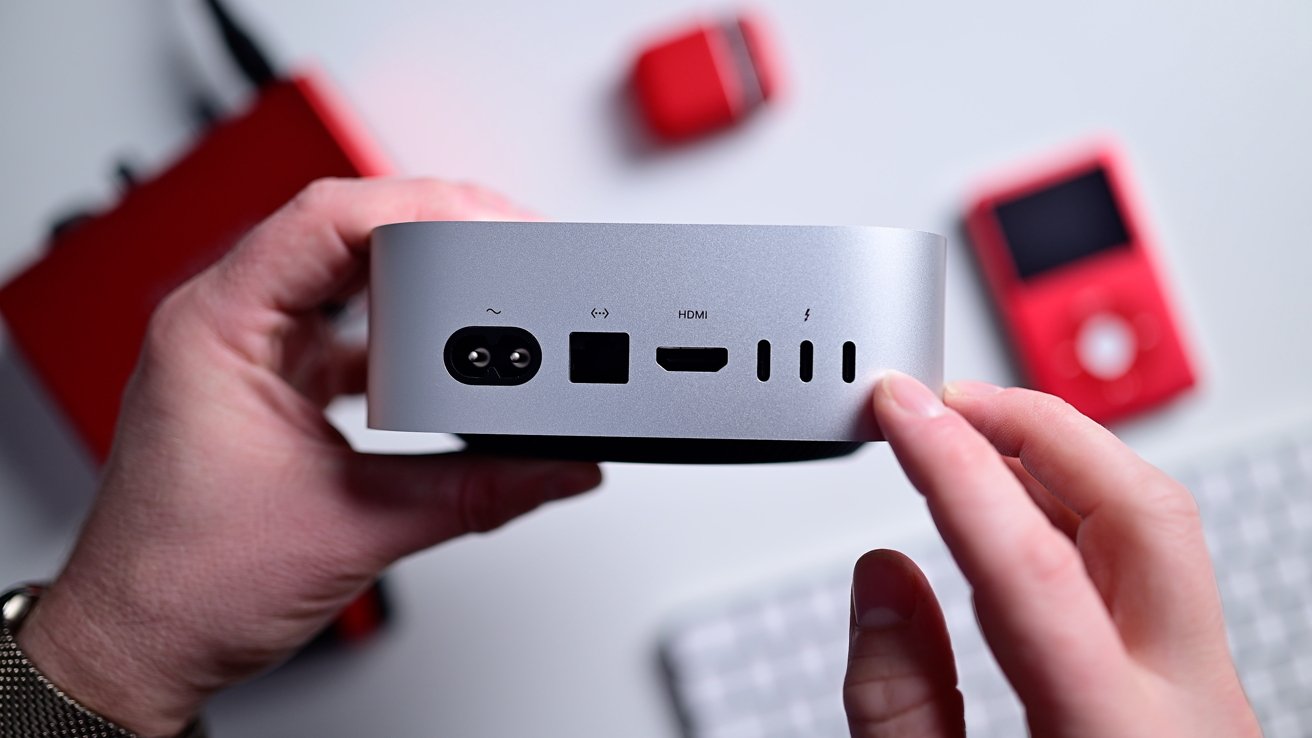
The rear ports include high-bandwidth options tailored for professionals
The rear layout retains essential ports: three Thunderbolt 5, HDMI, and a Gigabit Ethernet port (upgradable to 10Gb for those needing more bandwidth, such as in video streaming or high-speed editing environments). These ports cater to high-performance workflows, allowing for simultaneous multiple 6K displays or even 8K configurations for those working with cutting-edge visual technologies. This means you can connect everything from high-resolution monitors to external storage solutions without missing a beat or adding extra peripherals. Thunderbolt 5, in particular, is poised to make a huge difference, future-proofing your setup for years to come with its staggering speed of up to 80Gbps bi-directionally.
On the front, Apple has made a bold move by locating two USB-C ports and a headphone jack. Yes, it’s a departure from the all-rear-ports philosophy of previous Mac minis, but this change feels like a win for accessibility. No more twisting your device or fumbling in tight spaces when you need to plug in an external drive or quickly attach wired headphones. The USB-C ports are capable of 10Gbps speeds, keeping them more than adequate for casual use and fast data transfers. While it may slightly alter the sleek, distraction-free aesthetic many Mac mini purists appreciate, the improved usability makes it a feature most users will come to love.

Front-facing ports simplify frequently-used connections
Apple has also enhanced wireless capabilities, equipping the M4 Pro Mac mini with Wi-Fi 6E and Bluetooth 5.3. While these won’t revolutionize connectivity on their own, they ensure you have access to the latest wireless standards and improved stability for modern devices, including peripherals like external keyboards, mice, and audio devices. If your home or office network supports Wi-Fi 6E, you’ll notice faster downloads and smoother streaming, even when multiple devices are connected.
For those lamenting the loss of USB-A ports, it’s worth mentioning that Apple seems to be steering users toward USB-C with its forward-looking vision, much like it did when transitioning MacBooks away from older ports. While it aligns with the industry’s inevitable direction, the exclusion of these legacy ports may feel inconvenient for users with older peripheral devices. Luckily, Thunderbolt docks or USB-C to USB-A adapters can fill that gap if necessary.
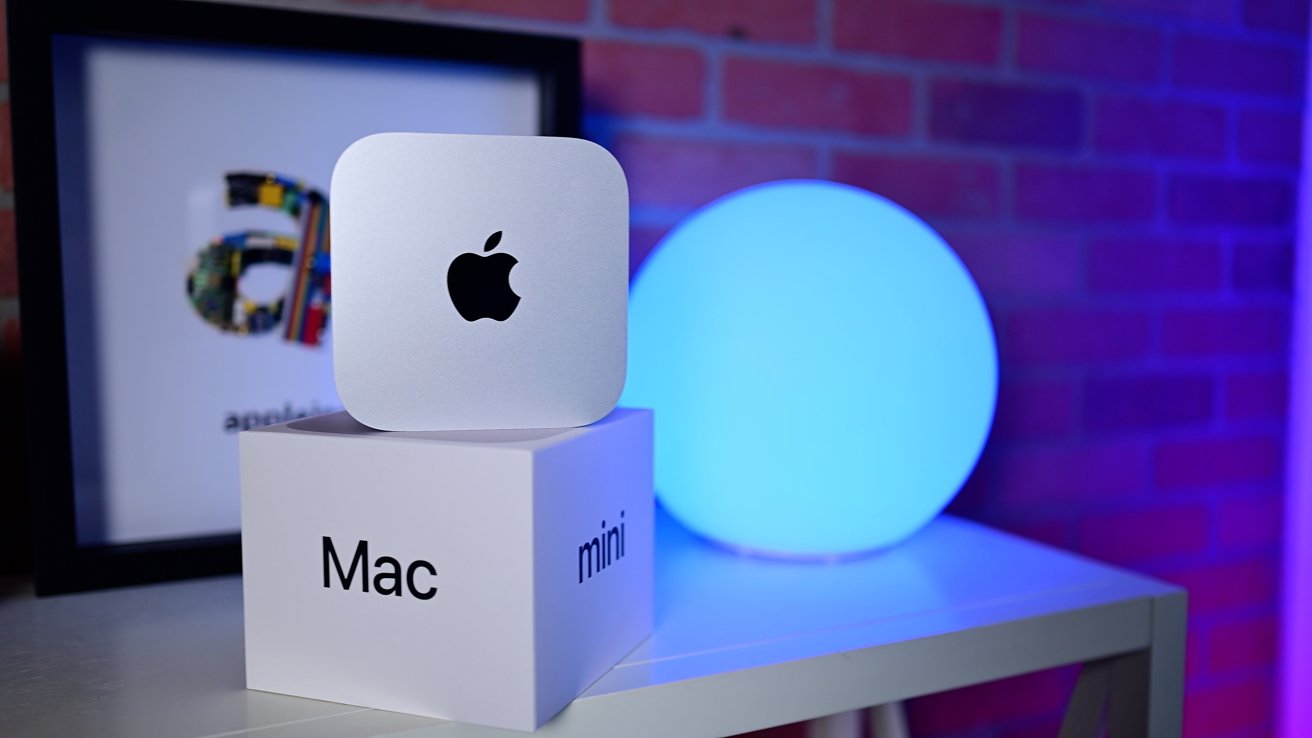
Compact yet equipped to handle diverse workflows with its port configuration
The Mac mini M4 Pro strikes a compelling balance between legacy needs and forward-thinking design. Its assortment of ports and wireless connectivity options ensures compatibility with both current and emerging technologies. For professionals who crave reliability, speed, and versatility, this unassuming little box delivers big. Apple’s careful attention to detail here is hardly surprising, but it feels particularly satisfying in a device aimed at handling the diverse demands of today’s creative and professional workflows.
When it comes to value, the Mac mini M4 Pro positions itself as a game-changer, delivering an incredible fusion of power, design, and accessibility at a price that feels almost too good to be true. Apple seems determined to disrupt the compact desktop market with this release, and they’ve succeeded by offering a product that rivals even the Mac Studio for a fraction of the cost.
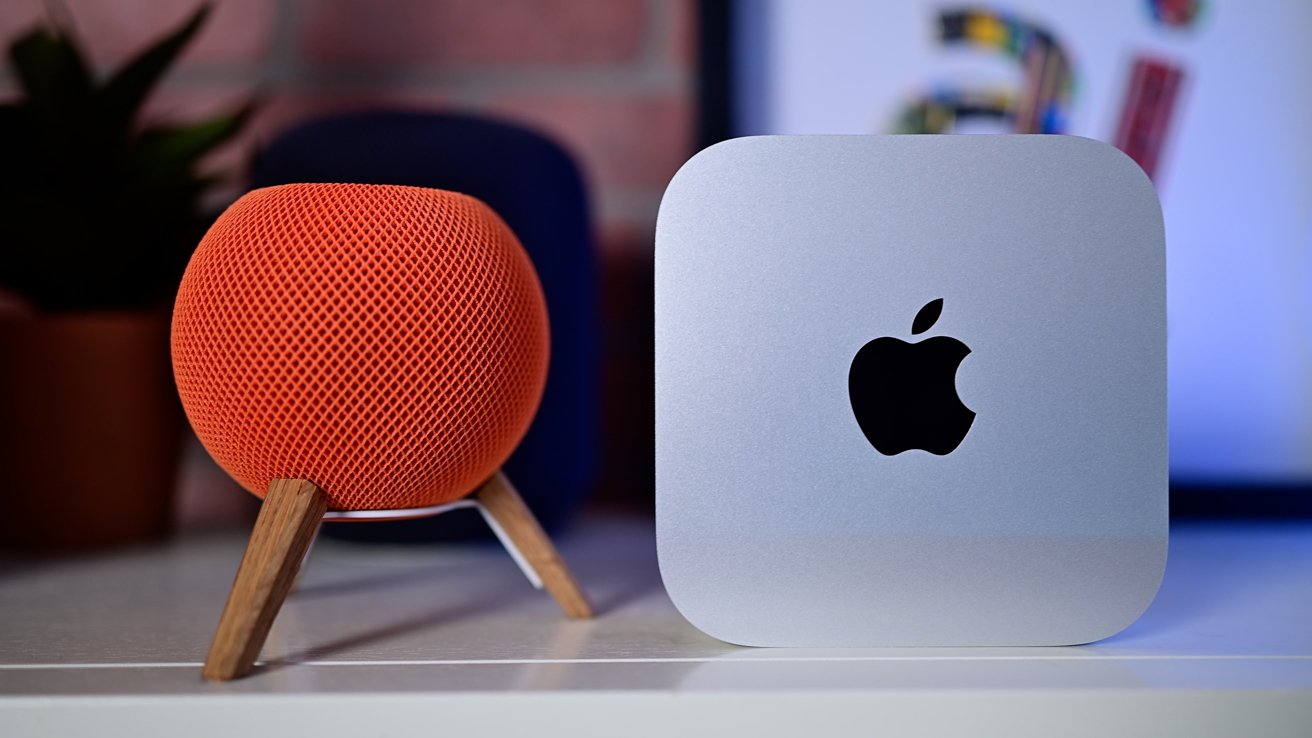
The compact Mac mini M4 Pro paired with the HomePod mini for a minimalist setup
Starting at ,399, the base model of the M4 Pro Mac mini comes equipped with the 12-core CPU, 16-core GPU, and a 512GB SSD. While this certainly isn’t aimed at casual users browsing the web or streaming Netflix, for professionals like video editors, animators, and developers, it’s a bargain compared to its larger, pricier counterparts in the Mac ecosystem. For comparison, the Mac Studio with the M1 Max starts at ,999, and even the M2 Pro Mac mini from earlier this year begins at a similar price point with less impressive specs. The M4 Pro offers performance leaps that justify every cent, even at its entry configuration.
Those looking for more can configure the M4 Pro Mac mini to meet their specific workflow needs. Upgrades include a 14-core CPU, a 20-core GPU, up to 64GB of unified memory, and an 8TB SSD. These upgrades, while admittedly expensive—Apple’s storage and RAM prices have always been notoriously high—allow this mini machine to compete with even high-end desktops. Opting for maximum configurations does push the price well into Mac Studio territory, but for users who don’t need or want the bulk of the Studio, the Mac mini’s value proposition remains compelling.
One of the most exciting aspects of the M4 Pro is its ability to future-proof your investment. With Thunderbolt 5 support, professionals can expect years of cutting-edge connectivity as new accessories and peripherals become available. Similarly, its enhanced graphics performance and memory capabilities ensure that this tiny powerhouse can handle increasingly demanding workloads without slowing down or becoming obsolete. At its price point, this level of longevity is nearly unheard of.
For budget-conscious buyers, it’s worth noting that external expansion can offset some of the costs associated with Apple’s premium upgrades. For example, rather than maxing out the internal SSD, professionals can invest in high-speed external Thunderbolt storage for a fraction of the cost. Similarly, opting for the base model and leaning on cloud solutions or external GPU enclosures could provide a more budget-friendly path to meeting specific needs without compromising the core performance advantages of the M4 Pro chip.
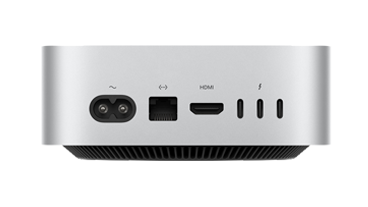
Competitive pricing makes the M4 Pro Mac mini an enticing choice for power users
What truly makes the Mac mini M4 Pro stand out is the balance it strikes between performance and price. It lands in the sweet spot, delivering enough power to rival the Mac Studio while retaining the compact form factor and accessibility that the Mac mini is celebrated for. For professionals evaluating whether to upgrade their desktops, this model offers an easy “yes,” particularly for those coming from Intel-based Macs or even earlier Apple Silicon models.
Professionals and power users across industries who once believed they needed to spend well over ,000 to achieve top-tier performance now find themselves reconsidering. With the Mac mini M4 Pro, Apple makes cutting-edge desktop computing more accessible than ever, opening up capabilities that were once reserved for much higher-end models to a far broader audience. Whether you’re upgrading the heart of your studio, building out a quick-render video editing setup, or looking for a capable server for intensive workflows, the M4 Pro Mac mini delivers immense value without compromise.
